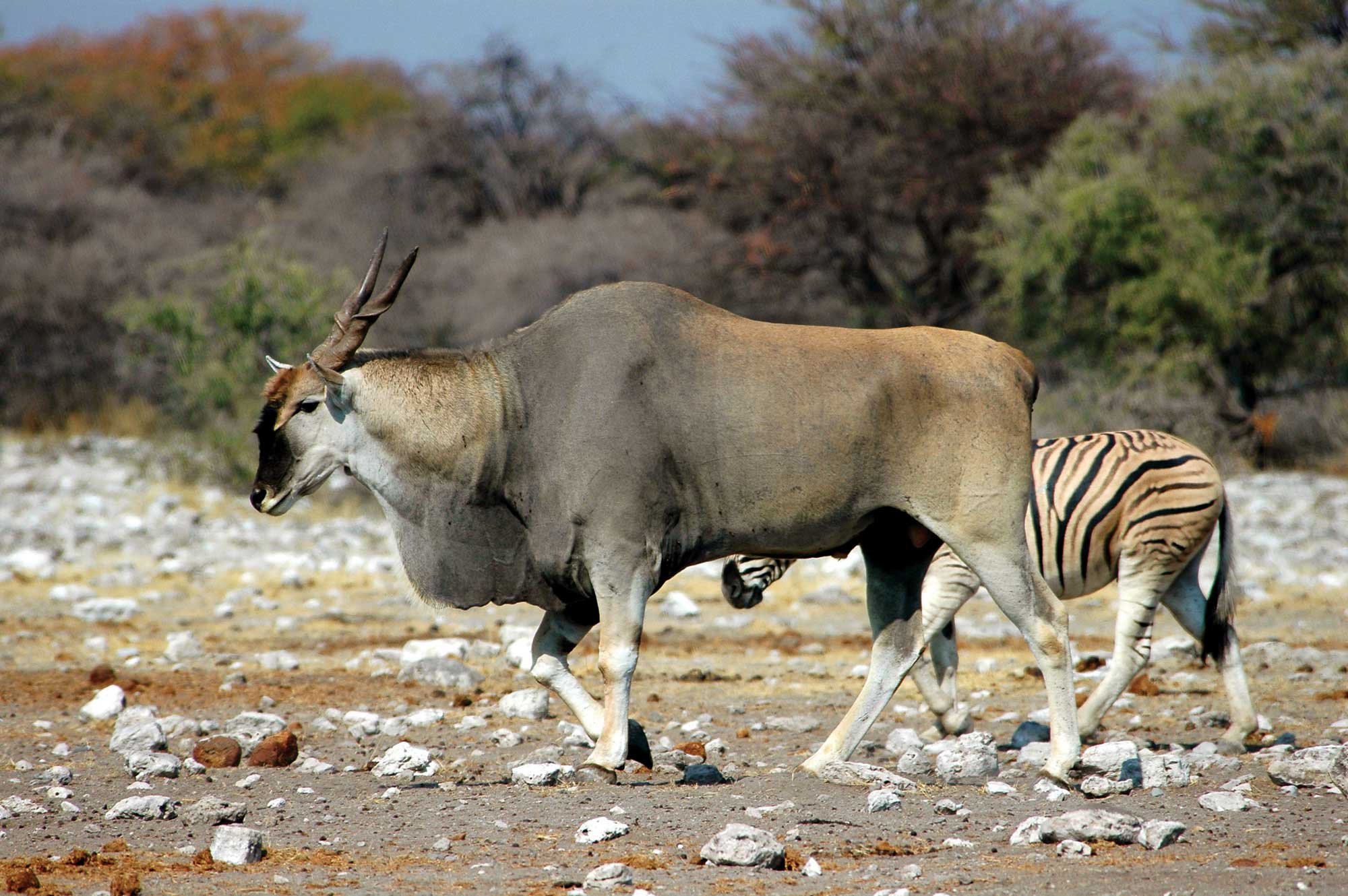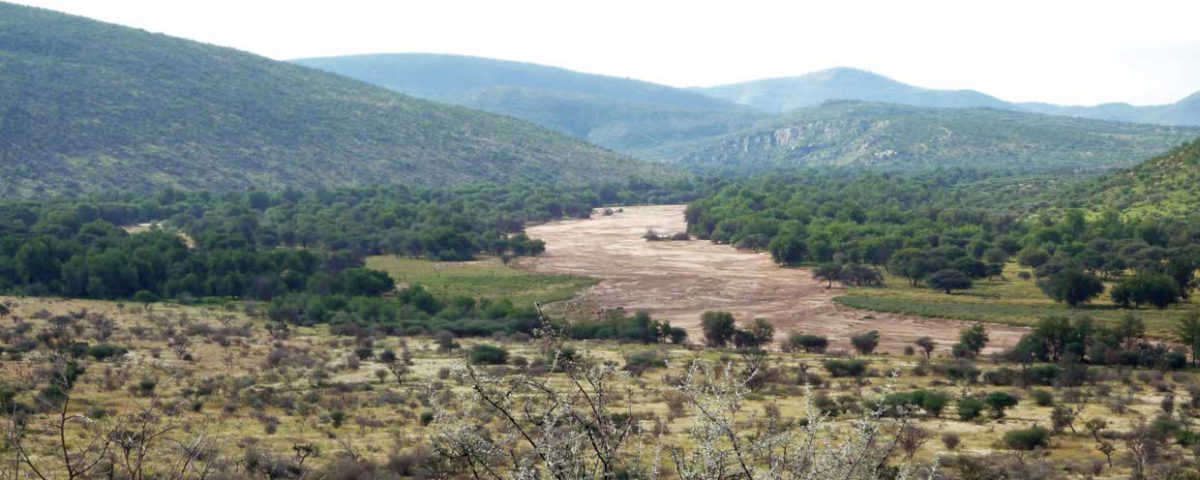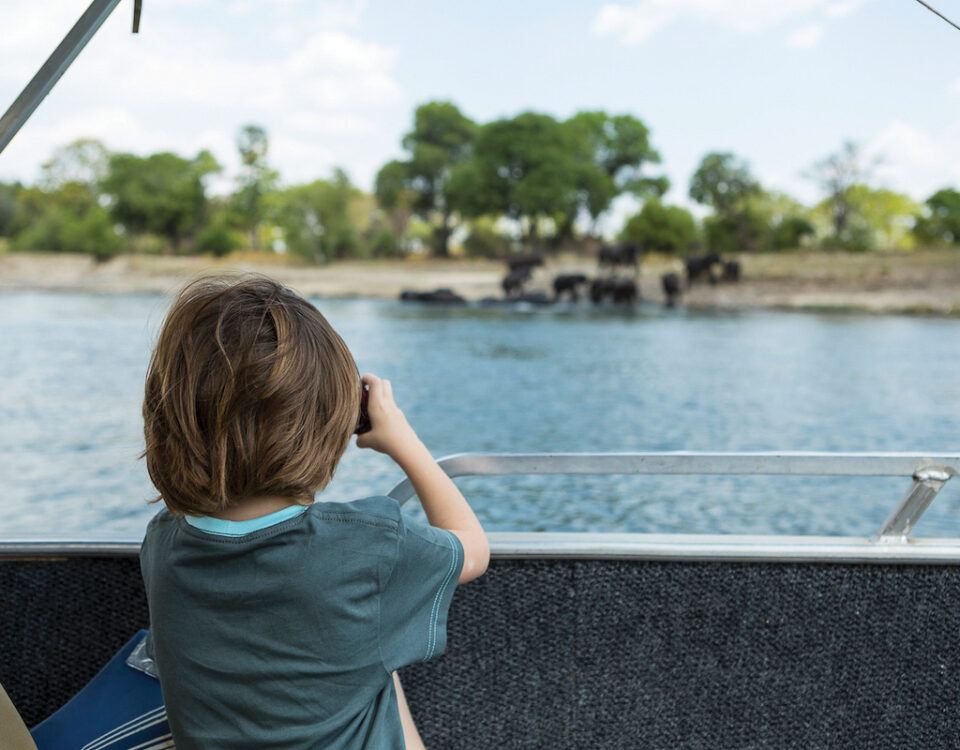| Main photo ©Mike Krafft

The Tsumkwe bull
June 9, 2016
A place of magnificent solitude
June 10, 2016I n order to get a better look into the dense bush we left the hunting vehicle at the foot of a tall mountain and started climbing. It was a hot day and before long we were sweating. But we were determined to find the old eland bull, the one with the tips of his horns rounded, with the black face and dark brown tuft on his forehead, the old bull with the large dewlap hanging far down from his throat. Yes, we wanted a bull like that. I had previously spotted him through my binoculars and now I wanted to hunt him, stalk him on foot in the dense bush.
Hunting eland is quite a challenge. Usually you look for fresh tracks at a waterhole and follow them to the grazing site where they linger and lie down as it gets warmer. Or, when you have found a suitable bull, you try to stalk him. In areas with particularly dense bush, eland are also hunted from a raised hide. Since I had neither a hide nor a track, I had to go and look for my bull. And I had to find him that day because it was the last day of the hunt.
Up and up the steep slope of the mountain, which we call Wit Koei, the White Cow. Finally we stopped in the shade of a rock ledge. Jean Luis is 75 years old, but he is strong, athletic and fit. Born in Vietnam he had regaled us with many a story from his colourful life. A man with stamina who knows danger and who has been in situations which most of us do not even dream of.
When we had caught our breath we systematically searched the valley in front of us with our binoculars. Jeremias, my hunting companion and guide for decades, spotted the group of eland first. They were in the shade of bushes, not all that far away. Some just stood there while others were feeding on the blooms. Initially we saw only seven antelope but we were certain that there were more of them. So we settled down in the shade, observed the group and looked for the others. The old bull had to be somewhere…. But where? It was late in the morning, the shade was shrivelling. And then, suddenly, there he was, standing among the young bulls. We could clearly see his long, low-slung dewlap and his face with a bushy brown tuft on the forehead was almost black. A murmur of awe went through our small group. What a sight! How large and heavy he stood there. This old bull must weigh at least 600 kg.
It didn’t take us long to decide how we would approach the eland, from where to stalk them; the wind was in our favour but we had to make a wide detour, because if we walked straight down the slope they would hear us. I asked Jeremias to stay on the mountain and let me know by hand signal where the eland were. Jean Luis and I would only see them when we were already very close.
Without a sound we went down on the opposite side of the mountain and slowly made our way through the bush, as gently and quietly as possible. Jeremias signalled that all was well. So we continued, steadily approaching the eland, scanning the bush in front of us because we had to see them first and then somehow get close to the bull.
“Hunting eland is quite a challenge. Usually you look for fresh tracks at a waterhole and follow them to the grazing site where they linger and lie down as it gets warmer. “

Suddenly, a snapping of branches, a loud clatter of hooves… “Quick, follow them to the clearing, perhaps they will stop to listen?” But they didn’t, they were gone and we stood there, aware again of how hot it was. We met Jeremias at the car and he explained where the eland had trotted off to. After our lunch break we would go and stalk them there. Sometimes it is good to take a break and make new plans.
Again we sat on the mountain and spotted the old bull. He was lying under a large bush, apparently all by himself. The other animals had moved about 200 metres further. “That looks promising, let’s go!” For my bearings I made a mental note of several camel-thorn trees. The distance was approximately one kilometre. This time only Jean Luis and my 10-year-old son Juri went with me… Juri is an enthusiastic up-and-coming hunter and he would accompany us without attracting attention.
I had memorised the way, and the wind was favourable. We just had to see them before they noticed us. All of a sudden, just as I signalled to Jean Luis that we were very close and had to exercise utmost caution, some 20 eland jumped up in front of us and trotted off. They were 50 metres away from us. I had known that it wouldn’t be easy. At least I now had fresh tracks to work with. On the red sand they were easy to follow. Jean Luis carried my 8x68S Mauser with a 180 grain Nosler partition bullet.
And then we had to act fast: the massive shape of the eland bull appeared in a small clearing. He paused in the opening and his whole shoulder blade was exposed! But we still had to pass one small bush. I signalled to Jean Luis to load the rifle and continue to follow me very slowly. Juri had to stay behind the bush. Anything but hasty movements right now. We glided past the bush, I bent forward to serve as a support and covered my ears. I felt Jean Luis taking aim and pulling the trigger after a tiny tremble.
The bull was 80 metres away from us. We clearly heard the bullet hit its target. I was worried that Jean Luis might have caught the bull a little too far in the back. The wounded bull now stood at a distance of 100 metres and swayed. A second shot aimed over my shoulder struck him down for good. What a great bull, what a hunt.
“And then we had to act fast: the massive shape of the eland bull appeared in a small clearing, he paused in the opening and his entire shoulder blade was exposed.”

This article was first published in the HUNTiNAMIBIA 2015 issue.


